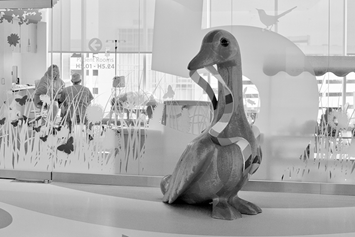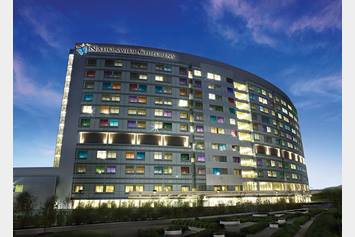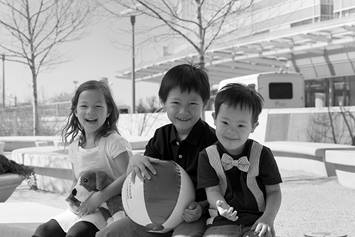Achondroplasia
Children with achondroplasia can lead normal lives provided they receive appropriate care and follow-up by knowledgeable providers.
What Is Achondroplasia?
Achondroplasia is the most common form of short-limb dwarfism. It is an autosomal dominant disorder caused by a mutation in the gene that creates the cells (fibroblasts) which convert cartilage to bone. This means, if the gene is passed on by one parent, the child will have achondroplasia. However, over 80% of individuals born with this disorder are born to parents who do not have the disorder. It affects mainly the long bones. As a result, individuals who have achondroplasia have short limbs but normal trunk height and head size with a prominent forehead.
What Are the Symptoms of Achondroplasia?
During pregnancy, a prenatal ultrasound which shows excess amniotic fluid and abnormal bone length measurements may be suspicious for achondroplasia. However, the diagnosis is usually made through physical examination of the infant after birth and through utilization of x-rays and ultrasound. Characteristic features of an infant with achondroplasia include:
- Disproportionately large head-to-body size difference with shortened arms and legs (especially the upper arm and thigh)
- Prominent forehead (frontal bossing) and depressed nasal bridge
- Underdeveloped midface and relative jawbone prominence
- Underdeveloped cheekbone resulting in tooth crowding
- Short appearing fingers with the ring and middle fingers pointing in opposite directions giving the hand a three-pronged (trident) appearance
- Limited elbow extension and rotation as well as limited hip extension
- Decreased muscle tone (hypotonicity)
- Often prominence of the mid-to-lower back with a small hump (gibbus)
Other signs and symptoms of achondroplasia which may develop over time include:
- Short stature (significantly below the average height for a person of the same age and sex). The average height of an adult with achondroplasia is 131 cm (52 inches, or 4 foot 4 inches) in males and 124 cm (49 inches, or 4 foot 1 inch) in females.
- Bowed legs (genu varum)
- Spine curvatures called kyphosis and lordosis
- Delay in reaching developmental milestones
- Delay in walking independently until 2-3 years of age
- Difficulty with speech because of a tongue thrust, but this usually resolves by school age
- Normal intelligence
- Obesity is common
- 10% of affected individuals have respiratory problems
- Narrowing of the spinal cord canal which can cause compression on the spinal nerves (spinal stenosis)
Treatment for Achondroplasia
Although the cause of achondroplasia is known, there is currently no known treatment for the underlying condition itself. Human growth hormone has been used to treat other types of dwarfism but has not proven beneficial for patients with achondroplasia. Overall, most treatment involves prevention and treatment of complications related to achondroplasia.
Babies with achondroplasia need to be monitored for problems with too much fluid on the brain (hydrocephalus) and may require a shunt to drain the fluid. Similarly, some babies may need the base of the skull (foramen magnum) to be surgically enlarged to prevent spinal cord compression. It is important children with achondroplasia receive timely dental care to prevent tooth overcrowding. Treating and preventing ear infections to prevent long-term hearing loss is critical. Limb-lengthening is a controversial treatment to increase the overall height and limb length of patients with achondroplasia. Preventing obesity, to reduce joint and back problems, is also important. Some patients may require a laminectomy for spinal stenosis as young adults.
When To Refer?
- Children with achondroplasia should be referred to the Orthopedic Department within 3 months.



